Guinea Pigs: More Than Just Pets in Peru
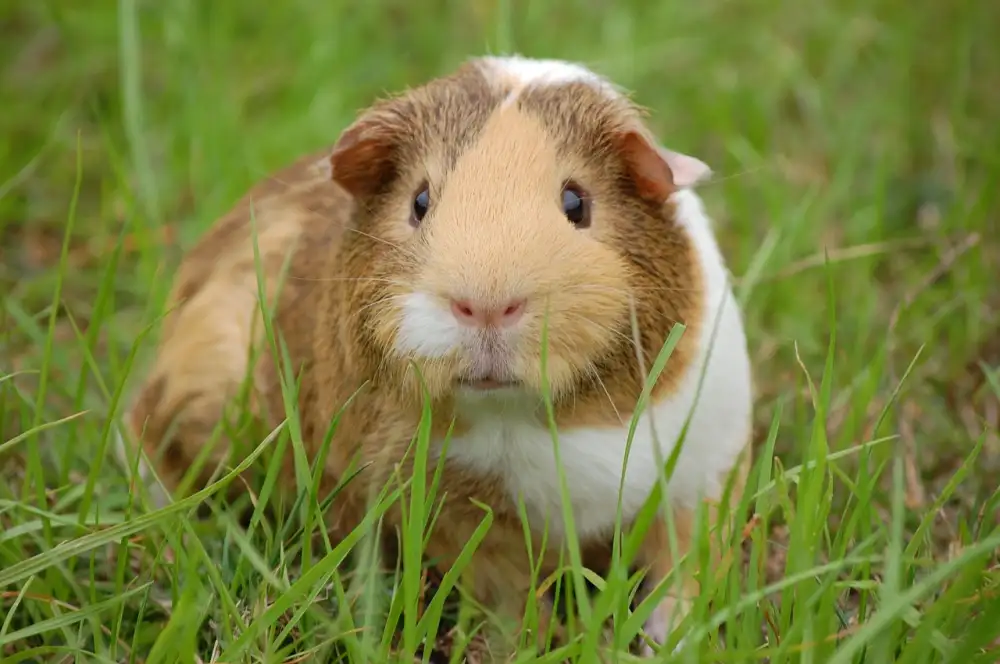
Traditional Andean Cuisine
The Peruvian Andes have a rich culinary tradition, and the guinea pig, or "cuy" as it's known locally, holds a special place. Far from being a pet, cuy has been a dietary staple for millennia in the Andes. Archaeological evidence points to its consumption dating back to 5000 BC. Cuy wasn't just food; it was intertwined with Andean beliefs and rituals. Depictions of cuy appear in ancient ceramics and textiles, highlighting its cultural importance.
Today, cuy remains a significant part of Andean cuisine, particularly for celebratory meals and special occasions. The most traditional preparation method is roasting, resulting in crispy skin and tender meat. "Cuy chactado" is a popular dish where the guinea pig is flattened and then deep-fried until crispy. It's often served with potatoes, corn, and a spicy salsa. Another common preparation is "Pachamanca," an ancient earth-oven cooking method where the cuy is buried alongside marinated meats, herbs, and vegetables and slow-cooked using hot stones.
While cuy might seem unusual to some, its continued presence in Peruvian cuisine speaks volumes about its historical and cultural significance. For many Peruvians, especially in the Andes, enjoying cuy isn't just a meal; it's a connection to their heritage and a celebration of their unique culinary traditions.
Religious and Spiritual Practices
In Peru, guinea pigs, or cuyes as they're locally known, hold a unique position that extends beyond just being pets. They're deeply intertwined with ancient traditions, particularly in the Andean highlands. While not worshipped in the traditional sense, cuyes feature prominently in spiritual and folk practices, often serving as a bridge between the physical and spiritual realms.
One of the most well-known practices is the use of cuyes in traditional Andean healing ceremonies, known as "mesadas." These rituals, led by healers called "curanderos," involve the cuy being rubbed over the body of someone who is unwell. It is believed that the cuy absorbs the negative energies or illnesses, acting as a sort of living talisman. Afterward, the cuy is often sacrificed and its entrails examined for signs that might guide the healer in their diagnosis and treatment.
Beyond healing, cuyes are also used in rituals seeking guidance or blessings from Pachamama, Mother Earth. These ceremonies often involve offerings to Pachamama, with the cuy being a significant one. The offering is seen as a way to show gratitude, ensure fertility of the land, and maintain balance within the natural world.
It's important to note that these practices are deeply rooted in Andean cosmology and belief systems, which emphasize the interconnectedness of all living things. While these practices might seem unusual to outsiders, they are a testament to the enduring cultural and spiritual significance of the cuy in Peruvian society, particularly in the Andean highlands.
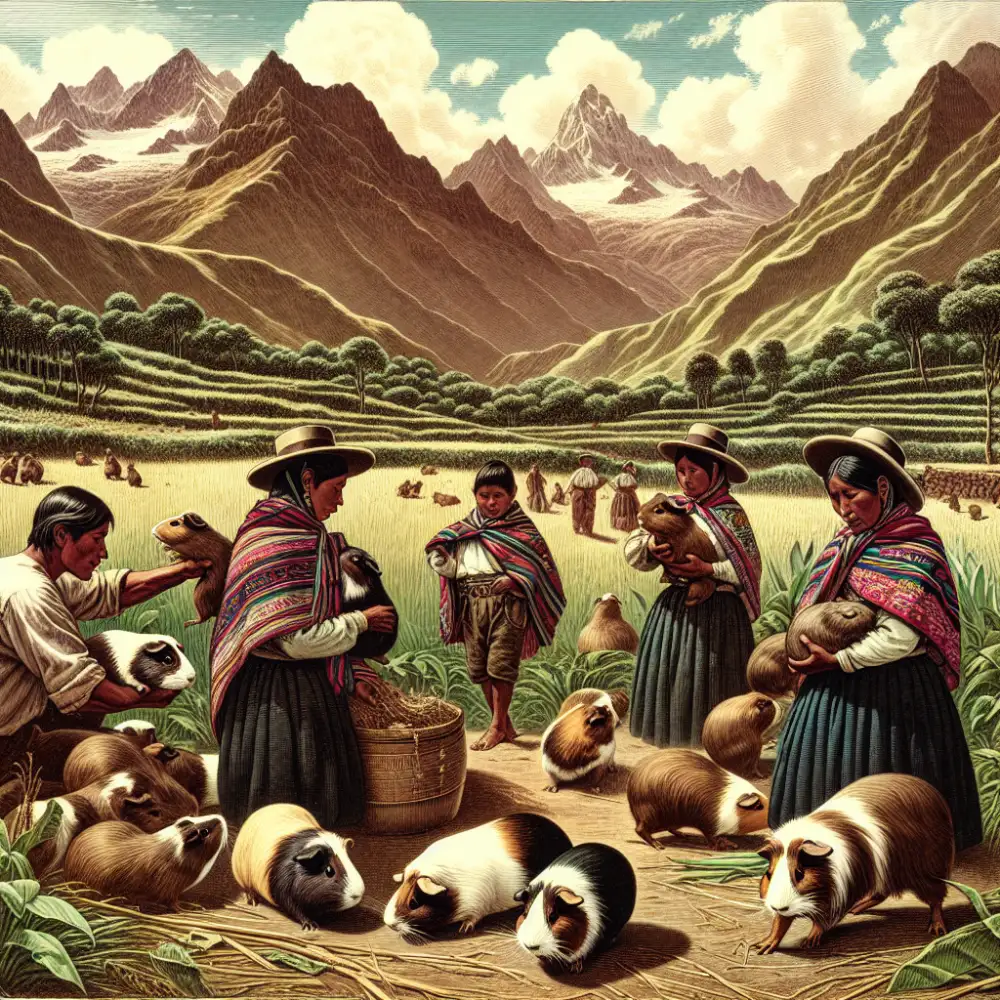
Medicinal Beliefs and Practices
Guinea pigs, known as cuy in Peru, hold a unique position beyond just being pets. They are deeply intertwined with traditional medicine, playing a vital role in healing practices passed down through generations. This connection stems from the Inca era, where animals, including guinea pigs, held spiritual significance and were believed to possess powers to diagnose and treat illnesses.
One of the most well-known practices is the use of guinea pigs in "cuy curanderismo." Here, a traditional healer, or "curandero," uses a live guinea pig to diagnose spiritual or emotional imbalances believed to cause illness. The guinea pig is rubbed over the patient's body, absorbing the negative energies. The curandero then examines the guinea pig's organs, interpreting their condition to determine the nature and location of the ailment.
While the scientific validity of cuy curanderismo is debated, its cultural importance in Peru is undeniable. Many Peruvians, especially in rural communities, place deep faith in this traditional practice, valuing its holistic approach to health and well-being.
Beyond diagnosis, guinea pigs are also used in remedies. Guinea pig fat, for instance, is believed to have healing properties and is used topically for ailments like earaches, burns, and respiratory problems. Some communities consume guinea pig meat as a source of protein and believe it to have medicinal benefits, particularly for pregnant women and new mothers.
It's important to note that while these practices are deeply rooted in Peruvian culture, ethical considerations regarding animal welfare are crucial. The use of live animals in healing practices raises concerns, and it's essential to approach these traditions with sensitivity and respect for both cultural beliefs and animal welfare.
In the Andes, the cuy is more than just a pet; it's a symbol of prosperity, woven into the fabric of daily life and ancient traditions.
Elias Mendoza
Folklore and Storytelling
Guinea pigs, known as cuy in Peru, are far more than just adorable pets. They are woven into the fabric of Peruvian culture, their presence felt in folklore, traditional medicine, and daily life. For centuries, these furry creatures have held a significant place in Andean cosmology and storytelling. Oral traditions, passed down through generations, feature cuyes in tales that explain natural phenomena, teach moral lessons, or simply entertain.
One prevalent theme is the cuy's association with good fortune and prosperity. They are often depicted as clever tricksters, outsmarting larger animals and even humans. These stories highlight the cuy's resourcefulness and adaptability, qualities admired in the often-challenging Andean environment.
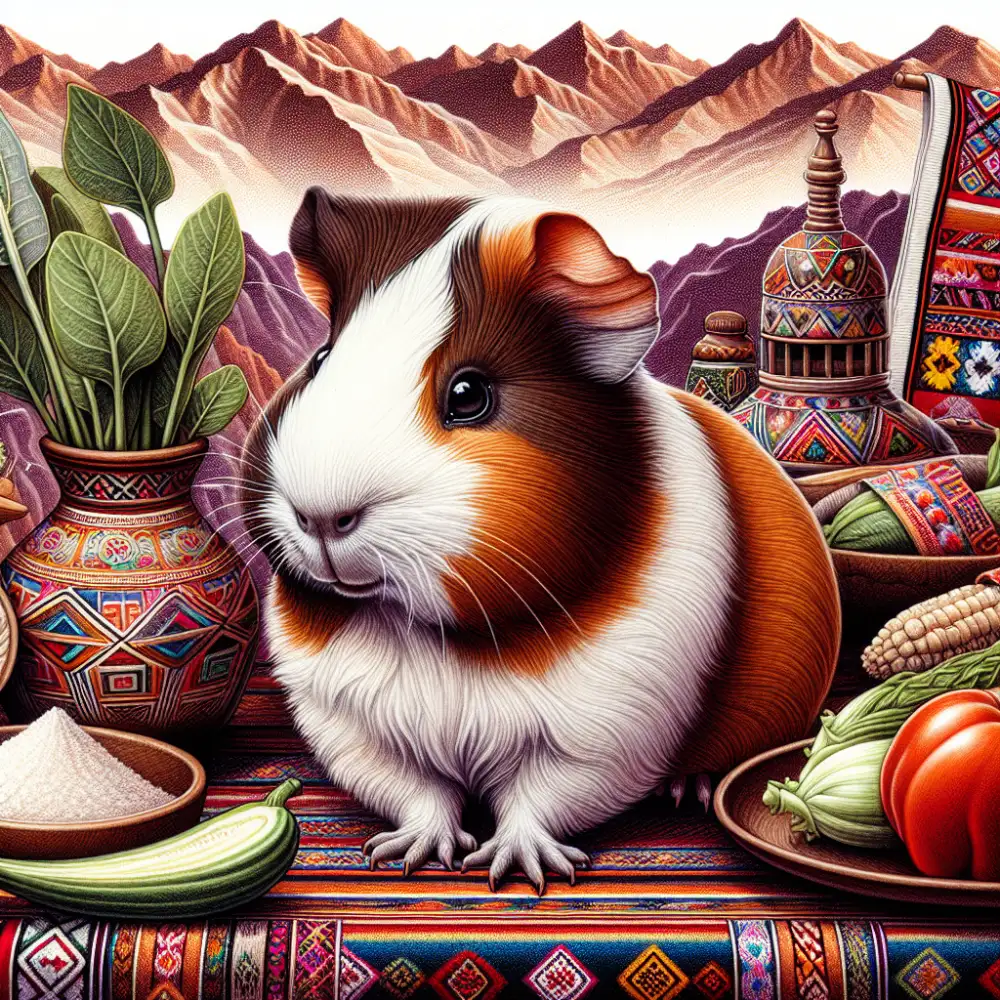
Beyond their role in folklore, cuyes are believed to possess spiritual and medicinal properties. Traditional healers, known as curanderos, use cuyes in rituals to diagnose illnesses and absorb negative energies. This practice, known as cuy limpia, is rooted in the belief that cuyes can act as intermediaries between the physical and spiritual realms.
The deep connection between Peruvians and cuyes is evident in their art and craftsmanship. Ceramic figurines depicting cuyes date back to pre-Inca times, showcasing their enduring presence in Peruvian culture. These figurines, often found in tombs, suggest that cuyes may have even played a role in ancient burial rituals.
Today, the cuy remains a powerful symbol of Peruvian identity. Whether enjoyed as a traditional delicacy, admired for its role in folklore, or respected for its spiritual significance, the cuy continues to hold a special place in the hearts and traditions of the Peruvian people.
Artistic Representations
Peruvian culture holds a special place for guinea pigs, extending beyond their role as adorable pets. These furry creatures, known as "cuy" in Peru, have been intertwined with the Andean people for centuries, their significance deeply rooted in tradition, spirituality, and even cuisine. This profound connection is vividly reflected in the realm of Peruvian art, where guinea pigs take center stage in various forms of artistic expression.
One cannot overlook the ubiquitous presence of guinea pigs in Peruvian ceramics. From the ancient Moche and Chimú civilizations to contemporary artisans, pottery depicting guinea pigs has consistently graced homes and ceremonial spaces. These ceramic cuy, often painted in vibrant colors and adorned with intricate details, serve not only as decorative pieces but also as symbolic representations of fertility, prosperity, and good luck.
Textiles, another cornerstone of Peruvian artistry, also showcase the cultural importance of guinea pigs. Intricately woven tapestries, blankets, and clothing often feature stylized cuy motifs. These designs, passed down through generations of weavers, embody ancestral knowledge and beliefs, with guinea pigs symbolizing abundance and well-being. The use of natural dyes derived from plants and minerals further connects these textiles to the earth and the cultural heritage they represent.
Venturing into the realm of painting, Peruvian artists have long found inspiration in the humble guinea pig. From colorful folk art depicting everyday scenes of Andean life to more contemporary interpretations, cuy frequently grace canvases as symbols of Peruvian identity and cultural heritage. These artistic representations often capture the endearing qualities of guinea pigs, highlighting their gentle nature and their close relationship with humans.
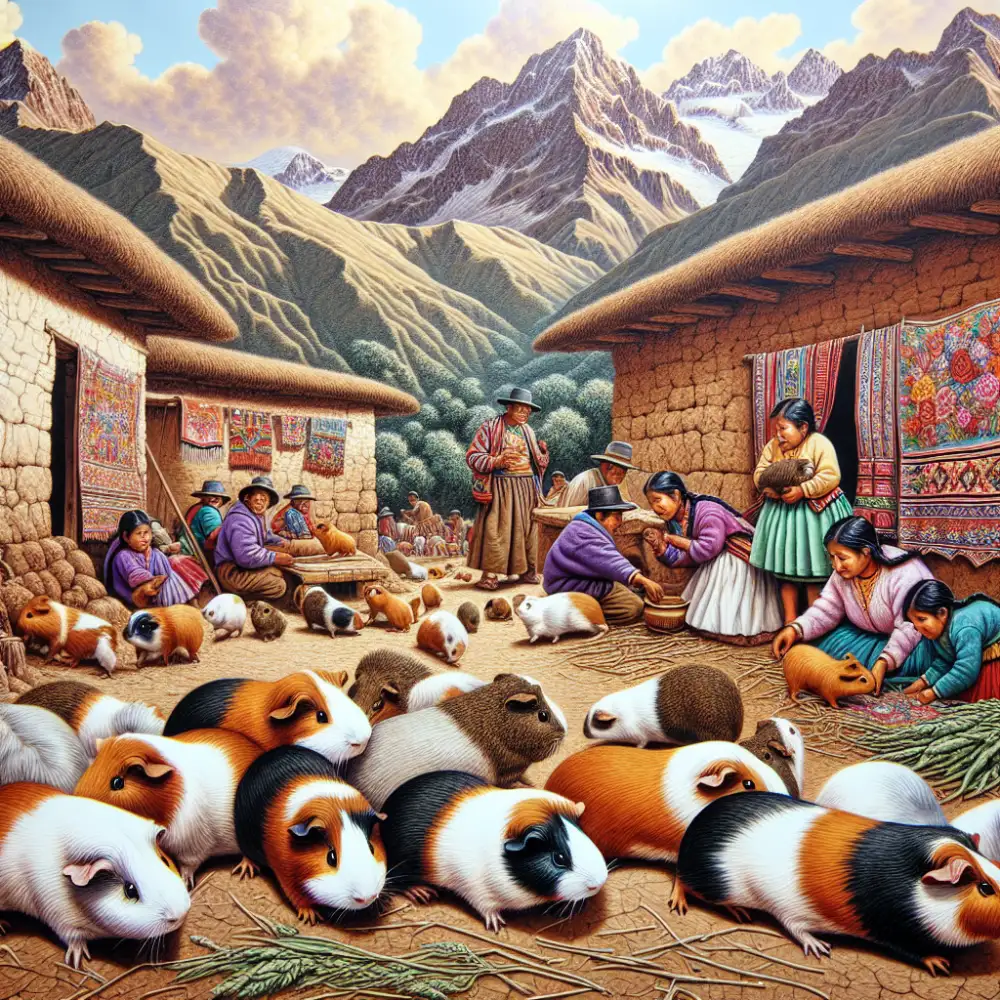

Beyond their physical depiction, guinea pigs also hold a significant place in Peruvian folklore and mythology. Stories and legends featuring cunning or wise cuy have been passed down orally for generations, further solidifying their place in the cultural fabric of Peru. These tales often impart moral lessons or explain natural phenomena, with guinea pigs serving as both relatable characters and symbolic representations of Andean values.
The artistic representations of guinea pigs in Peru offer a captivating glimpse into the rich cultural tapestry of this Andean nation. From ancient pottery to contemporary paintings, these artistic expressions serve as a testament to the enduring bond between humans and animals, highlighting the profound respect and admiration that Peruvians hold for these furry companions.
Economic Importance
Guinea pigs, known as "cuy" in Peru, are deeply woven into the fabric of Peruvian society, holding both cultural and economic significance. Far from being just pets, these animals represent a crucial source of protein and income for many Peruvians, particularly in rural and Andean communities.
Their affordability, ease of breeding, and relatively short reproduction cycle make them an accessible and sustainable source of food security for families. Guinea pig farming is often a family affair, requiring minimal investment and infrastructure. This accessibility empowers families to be self-sufficient, providing nourishment for their tables and generating income through local sales.
Beyond individual households, guinea pig farming contributes to the larger Peruvian economy. Markets bustle with vendors selling "cuy" prepared in traditional ways, attracting locals and tourists alike. This culinary tradition fuels a sector that includes breeding, raising, butchering, and restaurant businesses, creating jobs and supporting livelihoods.
The Peruvian government recognizes the importance of guinea pigs, implementing programs to promote breeding, improve farming techniques, and support the industry's growth. These initiatives aim to enhance the economic potential of guinea pig farming, particularly in rural areas where it can serve as a pathway out of poverty.
Moreover, guinea pigs play a role in cultural tourism. Visitors to Peru are often eager to experience the unique culinary traditions, and "cuy" features prominently in this cultural exchange. This interest translates into economic activity, benefiting restaurants, food vendors, and communities promoting their local cuisine.
In conclusion, the humble guinea pig plays a significant role in the economic landscape of Peru. From ensuring food security at the family level to contributing to national income through farming and tourism, the "cuy" is a testament to the ingenuity and resilience of Peruvian culture and its ability to transform a small animal into a valuable resource.
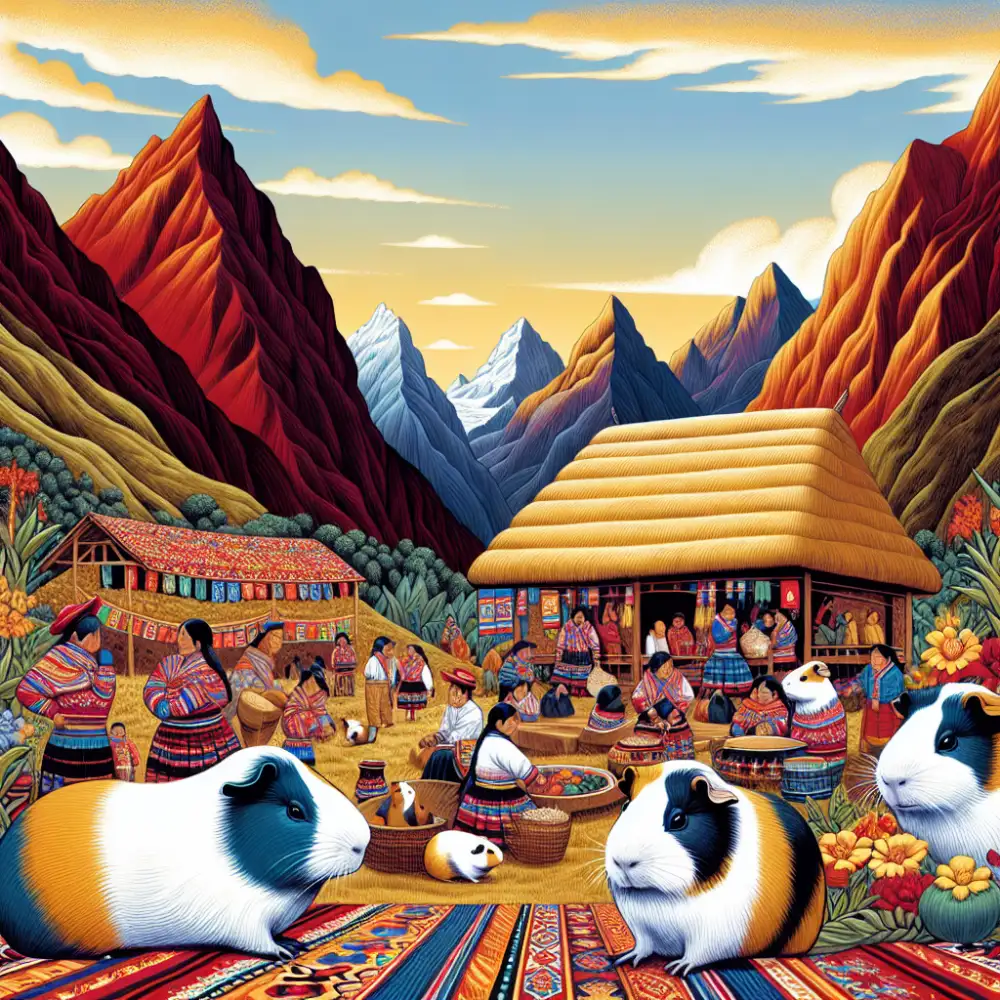
Modern-Day Pet Keeping
In the heart of the Andes, guinea pigs aren't just pets; they're a cherished part of Peruvian culture and cuisine. While the Western world often sees them as cuddly companions, in Peru, the guinea pig, known locally as "cuy," occupies a unique space.
For centuries, indigenous communities in Peru have raised guinea pigs for their meat, a tradition that continues today. Cuy is a staple in many Peruvian households, particularly in rural areas. It's a sustainable, protein-rich food source that's deeply ingrained in Andean traditions. You'll find cuy prepared in various ways, from crispy fried to hearty stews.
However, the relationship with guinea pigs in Peru isn't just about sustenance. They also hold cultural significance. Guinea pigs are used in traditional healing ceremonies and are believed to have medicinal properties in some communities. They're even used in some areas for spiritual cleansing rituals, demonstrating their deep-rooted importance in Peruvian culture.
Interestingly, the role of guinea pigs in Peru is evolving. While they remain a food source and cultural symbol, urban areas are seeing a rise in guinea pigs as pets. Much like in other parts of the world, Peruvian city dwellers are embracing guinea pigs as companions, drawn to their gentle nature and relatively low-maintenance care.
This shift reflects a broader trend of changing attitudes towards animals globally. As more people move to urban centers and seek companionship, the role of animals like guinea pigs is adapting. In Peru, this means the guinea pig occupies a fascinating position, embodying tradition, sustenance, and now, companionship.
Published: 25. 06. 2024
Category: culture



